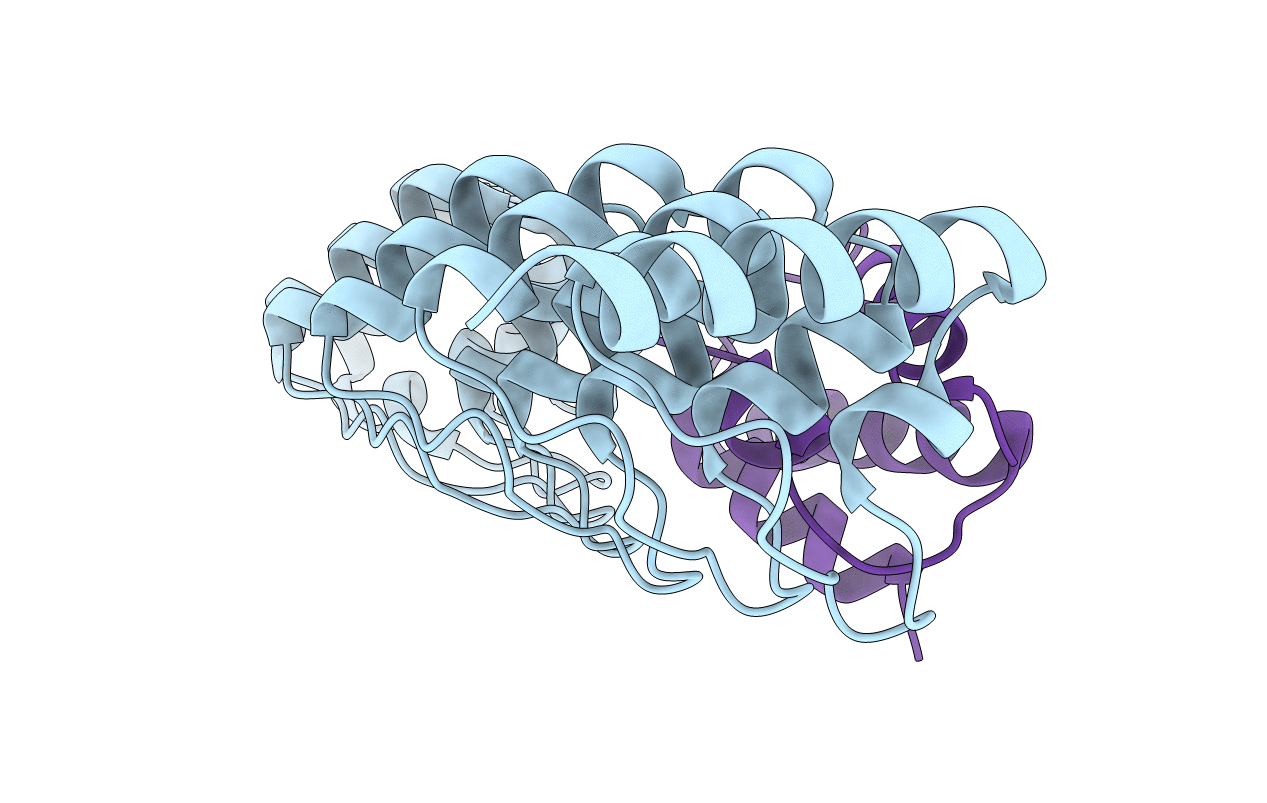
Deposition Date
2006-08-01
Release Date
2007-03-13
Last Version Date
2023-10-25
Entry Detail
PDB ID:
2DVW
Keywords:
Title:
Structure of the Oncoprotein Gankyrin in Complex with S6 ATPase of the 26S Proteasome
Biological Source:
Source Organism:
Mus musculus (Taxon ID: 10090)
Homo sapiens (Taxon ID: 9606)
Homo sapiens (Taxon ID: 9606)
Host Organism:
Method Details:
Experimental Method:
Resolution:
2.30 Å
R-Value Free:
0.23
R-Value Work:
0.16
R-Value Observed:
0.16
Space Group:
P 21 21 21


